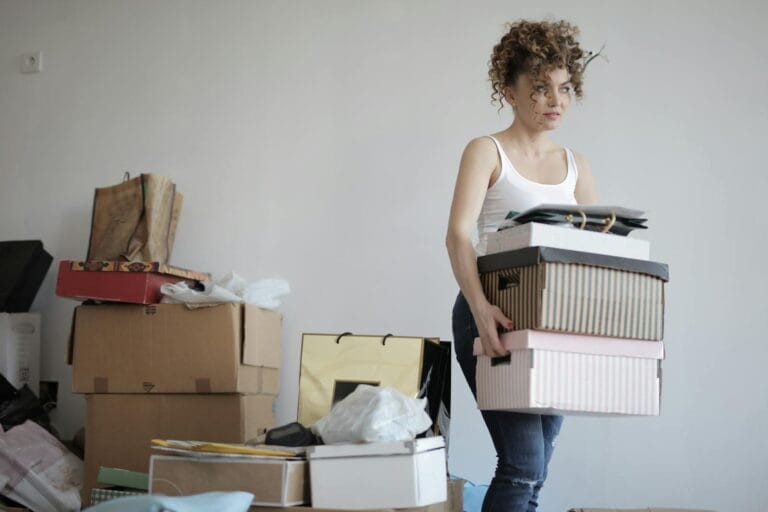Kids love hands-on activities, and eco-friendly projects are a great way to keep them busy while also teaching some important lessons about caring for the planet. These activities help children pick up earth-friendly habits early on, all while having fun with recycling crafts, exploring outside, and trying out sustainable projects—no need for pricey plastic toys.
Teaching kids about sustainability doesn’t have to be tricky or dull. Simple things like eco-scavenger hunts and nature walks can spark their curiosity about the world around them. Recycling crafts and creative projects let kids turn everyday stuff into something new and cool.
The nice thing about eco-friendly activities is that they work for any age and can fit easily into your routine. Whether you need a rainy day project or something to do outside, these ideas help kids see their connection to the environment and build useful skills along the way.
Core Eco-Friendly Activities for Kids
These hands-on projects teach kids about sustainability while making fun memories. You just need simple supplies to cut down on waste and help kids connect with nature.
Recycling and Repurposing Everyday Items
Instead of tossing things out, turn household items into crafts. Empty plastic bottles can become planters for herbs or flowers—just cut them, poke holes for drainage, and you’re set.
Cardboard boxes can transform into castles, cars, or dollhouses with a little paint and creativity. Egg cartons are great as seed starters or as paint palettes.
A few easy recycling projects:
- Tin cans wrapped in colorful paper for pencil holders
- CD sun catchers for windows
- Newspaper pots for starting seeds
- Glass jars with decorated lids for storage
These recycling crafts show kids how everyday things can get a second life. It’s a good way to talk about reducing waste and saving money on new stuff.
Nature Scavenger Hunts
Make a list of natural items for kids to find outside—leaves, smooth rocks, cool sticks, or flower petals. It’s a fun way to build observation skills while exploring.
You can make it more interesting by adding tasks like finding something rough, something that makes a sound, or something tiny. Kids start to notice textures, sounds, and sizes in nature.
Some scavenger hunt ideas:
- Leaves in different colors (red, yellow, brown)
- Items that start with the letters in their name
- Things animals might use for shelter
- Natural objects of various sizes
Take photos instead of picking living plants or disturbing animal homes. It’s a gentle way to teach respect for nature while still having fun.
Growing a Sustainable Garden
Start small with easy plants like lettuce, radishes, or herbs in containers. These grow quickly, so kids can see how food comes from soil and seeds. Use compost from kitchen scraps as a natural fertilizer.
Show kids how to save water by collecting rain in buckets for the garden. Watering in the morning helps plants stay healthy, too.
Some easy plants to try:
- Lettuce (about 30 days)
- Radishes (about 25 days)
- Basil (grows all season)
- Cherry tomatoes (produces all summer)
Kids get to see where food comes from and what plants need to grow. Gardening helps them connect with nature’s cycles and cuts down on trips to the store for fresh herbs.
Eco-Friendly DIY Bird Feeders
Make bird feeders with pinecones, peanut butter, and birdseed. Just roll a peanut butter-covered pinecone in seeds and hang it from a tree with string.
Or use toilet paper tubes—cover them in peanut butter, roll them in seeds, and hang them up. These break down naturally when they’re done.
What you’ll need:
- Pinecones from outside
- Natural peanut butter (no salt or sugar)
- Mixed birdseed
- Twine or natural rope
Kids can watch all sorts of birds visit their feeders. It’s a nice way to learn about local wildlife and help birds, especially in winter when food is scarce.
Creative Eco-Friendly Crafts and Projects
Kids can turn everyday waste into art and learn about protecting the environment at the same time. These hands-on projects help them see the potential in things most people throw away.
Making Nature Collages
Nature is full of free art supplies. Pick up fallen leaves, flower petals, small twigs, and smooth stones on your walks.
Press leaves between heavy books for a week to keep them flat and colorful.
Make seasonal collages by gluing pressed leaves onto cardboard or construction paper. Fall leaves are perfect for making animals like owls or hedgehogs.
You’ll need:
- Fallen leaves and flowers
- Heavy books
- White glue or glue sticks
- Cardboard or thick paper
Flower petals can make nature-inspired art or patterns like butterflies. Glue petals in shapes or just let kids get creative.
Small stones and twigs add texture. Try painting stones to look like ladybugs or faces before adding them to your collage.
Upcycled Materials Art
Cardboard boxes can be used as canvases instead of being tossed in the recycling. Cut big pieces for painting or building sculptures.
Egg cartons become flower gardens—just paint each cup, add pipe cleaners for stems, and arrange them on your desk.
Common things to use:
- Cardboard boxes and tubes
- Egg cartons
- Plastic containers
- Old magazines
- Bottle caps
Plastic containers work as paint palettes or for storing art supplies. Big yogurt containers are handy for washing paintbrushes.
Magazine pages are great for colorful collages or mosaics. Tear them up and sort by color for recycling crafts with rainbow effects.
Bottle caps make fun stamps if you stick foam shapes to the bottom. Dip them in paint and stamp away.
Building with Reused Household Goods
Toilet paper rolls can be cut and slotted together to build towers or bridges. You can make castles, bridges, or wild sculptures using just tubes and tape. Paint them for extra flair.
Supplies from the trash bin:
- Toilet paper tubes
- Cereal boxes
- Plastic bottles
- Cardboard scraps
Cereal boxes are sturdy enough for building bigger things—cut out doors and windows for dollhouses or garages.
Plastic bottles (with the caps off) can be cut to different sizes for building. Try them in your sustainable craft projects.
Cardboard from packages makes good walls, ramps, and roofs. Score it lightly with scissors for neat folds.
Tape, glue, or cut slots to connect everything. It’s a fun way to solve problems and reuse stuff you already have.
Environmental Education and Everyday Awareness
Helping kids become more aware of the environment starts with simple habits at home and can grow into bigger school projects or community events. These approaches encourage kids to build green habits through hands-on learning and practice.
Teaching Sustainability at Home
Parents can easily add eco-friendly habits to daily routines. Start with small steps that become second nature.
Everyday Green Habits:
- Turn off lights when leaving rooms
- Take shorter showers
- Use both sides of paper
- Sort recycling together
- Walk or bike for short trips
Set up a family recycling station with clear labels and let kids be in charge of sorting.
Grow a small garden together, even if it’s just some herbs on a windowsill. Kids see firsthand where food comes from and how plants help the environment.
Make water conservation a game—time showers or collect rainwater for plants. It’s a simple way to show that little actions matter.
Cook meals together using local ingredients when you can. It’s a chance to talk about how food choices impact the planet.
Promoting Environmental Awareness in Schools
Schools play a big part in teaching kids about the environment. Teachers can add sustainability activities to everyday lessons.
Some good school programs:
- Recycling at school
- Garden-based learning
- Energy-saving contests
- Waste reduction challenges
- Nature walks and outdoor lessons
Give students jobs like “energy monitor” or “recycling captain” so they feel responsible for green practices.
Start a composting program where students collect food scraps and learn about decomposition.
Set up bird feeders or butterfly gardens on school grounds. Kids can watch wildlife and talk about ecosystems.
Use outdoor classrooms for science. Being outside helps kids connect with nature and understand why it’s important to protect it.
Celebrating Earth Day with Kids
Earth Day is a great time to focus on environmental education. Extending green habits beyond just one day helps kids build lasting awareness.
Earth Day activities for kids:
- Plant trees or flowers
- Organize neighborhood cleanups
- Make art from recycled materials
- Write letters to local leaders about environmental issues
- Create posters about saving energy
Try 51 environmental activities with your family, from crafts to community service.
Organize clothing swaps or toy exchanges to teach kids that reusing things cuts down on waste.
Visit local nature centers or parks. These trips help kids connect with their local environment and learn about native plants and animals.
Take photos of your family’s green actions throughout the year—gardening, recycling, or nature walks—to see how much you’ve done.
Encouraging Lifelong Sustainable Habits
Helping kids build real environmental awareness means weaving eco-friendly habits into daily life and connecting them with their community. That way, these activities become part of who they are.
Incorporating Eco-Friendly Activities into Daily Routines
Bringing sustainable practices into your child’s daily schedule makes them stick. Start with easy routines like turning off lights and unplugging devices.
Daily Habit Checklist:
- Turn off the water while brushing teeth
- Use reusable water bottles and lunch boxes
- Sort recyclables during cleanup
- Walk or bike for short trips
Try fun eco-friendly activities that fit your family’s schedule. Make reducing waste a game—track your family’s trash each week and see if you can beat your record.
Set up recycling bins in different rooms so sorting becomes automatic.
Weekly Activities:
- Monday: Check for items to reuse
- Wednesday: Plan meals to cut down on food waste
- Friday: Collect donations
- Sunday: Look back on the week’s eco-friendly choices
Community Clean-Up and Volunteering
Getting involved in the community really shows kids that what they do matters. When they join local clean-up events, they learn that caring for the environment isn’t just something you do at home—it’s everywhere.
Check out neighborhood park cleanups or maybe a beach restoration project if you’re near the coast. These kinds of hands-on activities let kids actually see the difference they’re making, which is pretty motivating. Lots of towns have monthly events that are family-friendly.
Community Options:
- Beach or river cleanups
- Park maintenance days
- Tree planting events
- Community garden work
- Animal shelter volunteering
Volunteering at animal shelters or helping on farms is a great way for kids to connect with animals and nature. Sometimes, that up-close experience really sticks with them.
If you can, try starting a neighborhood group with other families who want to teach kids about sustainability. Working together on projects not only helps the planet but also brings people closer.
Your local library or community center probably offers youth environmental programs. These are usually well-organized and give kids regular chances to learn and get involved.




